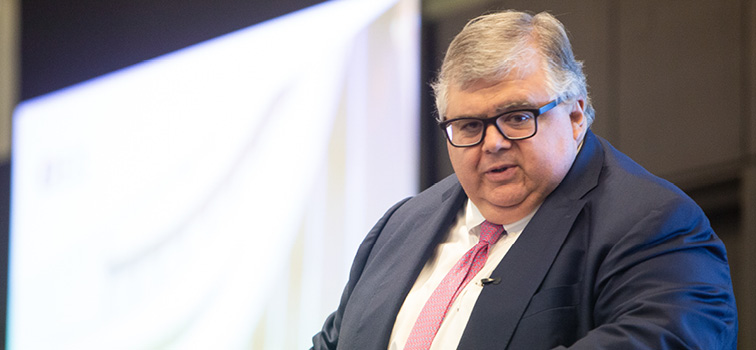Annual Whitaker Lecture - The Future of Money and Payments

There is no clear demand for a central bank backed digital Currency (CBDC) and no evidence that such a currency would serve us any better than what existing technology allows.
This was the view expressed by the Mexican economist Agustín Carstens former Governor of the Bank of Mexico, currently General Manager of the Bank for International Settlements.
Carstens made the remarks when giving the ninth Whitaker Lecture at the Central Bank Dockland Campus on Friday 22 March 2019.
The annual lecture commemorates TK Whitaker, the influential economist and civil servant who served as the Governor of the Central Bank of Ireland from 1969 to 1976.
In an address entitled "The Future of Money and Payments" Carstens shared his thoughts around how technological innovation may affect the monetary system – in particular the implications for a so-called CBDC.
In an insightful lecture, Carsten outlined what a future monetary system with a CBDC would look like and the issues it would present to central banks as we move further into the digital age.
“The debate is not primarily about convenience and digitisation; rather, it’s about fundamental changes to both parts of the system that central banks oversee: money and payments,” said Carstens
“So far, experiments have not shown that new technologies would work any better than existing ones. There is no clear demand for CBDCs on the part of society,” he added.
Closing his lecture on the implications for a CBDC Carsten cited the words of Whitaker who said that the role assigned to the central bank was “to be cautious, to be the warning light”.
“Central banks do not put a brake on innovations just for the sake of it. But neither should they speed ahead disregarding all traffic conditions,” said Carstens.
“We have to make sure that innovations set the right course for the economy, for businesses, for citizens, for society as a whole. This is what we are doing now.”
See also: